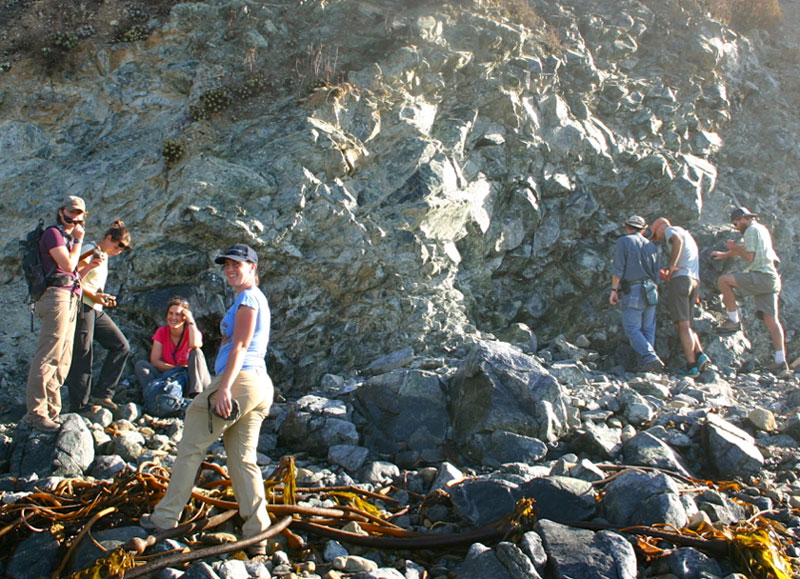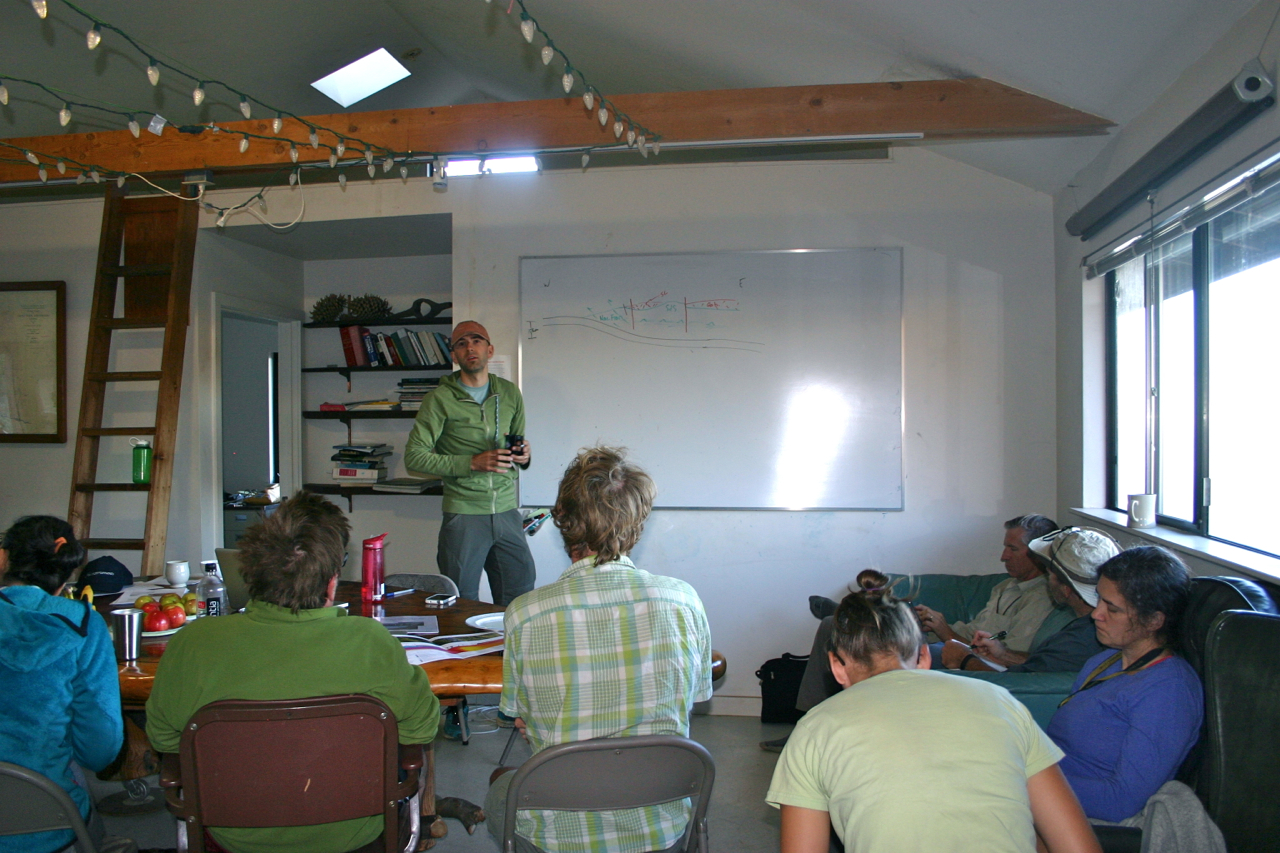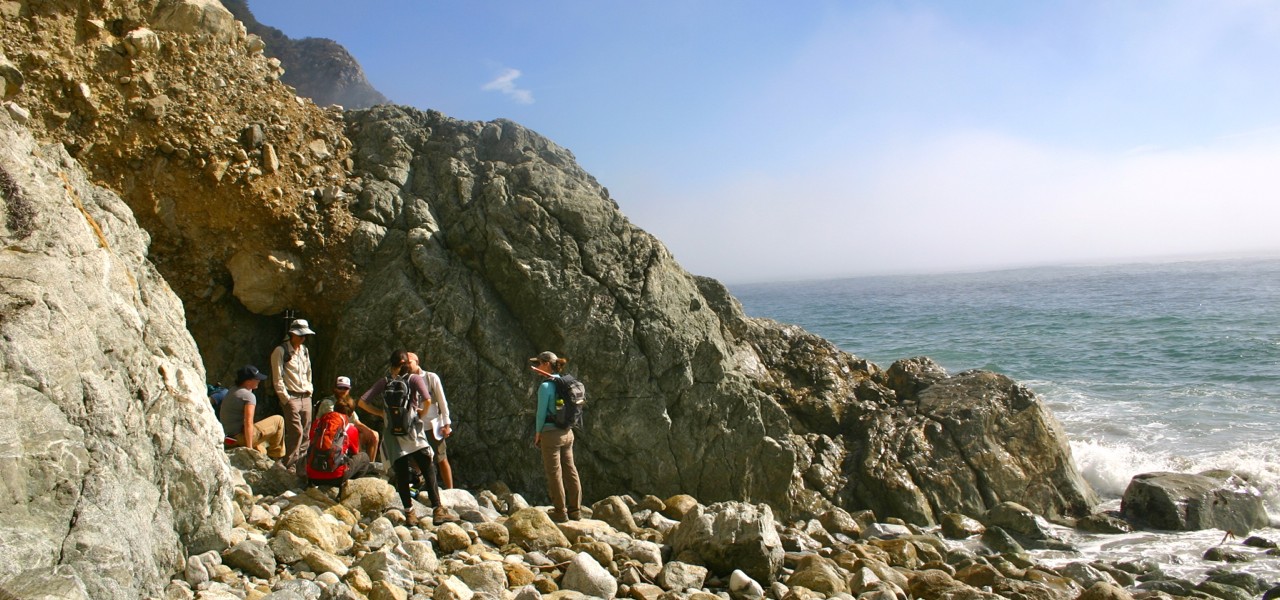 The first ExTerra Field Institute was held from October 11-13, 2014 in the Santa Lucia Mountains of central coastal California. The institute featured a tilted view through the Late Cretaceous Salinian arc and its framework from shallow exposure levels to the deep crust, accretionary wedge sediments and various metamorphosed subduction assemblages of the Franciscan Complex, and possible intrusions of lithospheric upper mantle-derived melts in the Escondido ultramafic body. Convened by Mihai Ducea (University of Arizona), Alan Chapman (Missouri S&T), Maureen Feineman (Penn State), and Sarah Penniston-Dorland (University of Maryland), the institute was attended by 11 geoscientists. Of the participants, 6 were female and 5 male; 6 were graduate students or early-career faculty and 5 were mid-career or senior faculty. Fruitful group discussions took place throughout the trip, many of which were guided by the big questions identified in the ExTerra White Paper:
The first ExTerra Field Institute was held from October 11-13, 2014 in the Santa Lucia Mountains of central coastal California. The institute featured a tilted view through the Late Cretaceous Salinian arc and its framework from shallow exposure levels to the deep crust, accretionary wedge sediments and various metamorphosed subduction assemblages of the Franciscan Complex, and possible intrusions of lithospheric upper mantle-derived melts in the Escondido ultramafic body. Convened by Mihai Ducea (University of Arizona), Alan Chapman (Missouri S&T), Maureen Feineman (Penn State), and Sarah Penniston-Dorland (University of Maryland), the institute was attended by 11 geoscientists. Of the participants, 6 were female and 5 male; 6 were graduate students or early-career faculty and 5 were mid-career or senior faculty. Fruitful group discussions took place throughout the trip, many of which were guided by the big questions identified in the ExTerra White Paper:
7) What are the mass fluxes into and out of the crust over geologic time?

Alan Chapman leads a morning discussion at the Whale Point Cabin at the Landels-Hill Big Creek Reserve.
Two significant ideas for future research in the Santa Lucia Mountains emerged from group discussions. The first relates to the processes by which metasedimentary rocks are emplaced into arc lower crust (>30 km paleodepth). Possibilities include downward flow of upper crustal sections, retroarc thrusting from the foreland, and tectonic underplating and/or diapirism from the trench side. Discriminating between these mechanisms will require focused structural, U- Pb zircon geochronologic, and zircon Hf isotopic analyses, as each model predicts different temporal and spatial patterns in pluton and supracrustal contaminant geochemistry. The group collected samples from several areas with the goal of performing such analyses. Sampled areas included Sur Series metamorphic framework rocks, deep plutonic rocks of the Coast Ridge belt, and trench deposits of the Franciscan Complex. The second effort will be to constrain the gabbroic (mantle-derived) input in a continental magmatic arc. Accordingly, samples exhibiting mafic compositions were collected from various locations within the Salinian arc and also from the Escondido ultramafic body that intrudes the arc. Other proposed ideas for study included building a comprehensive geochemical, structural, and geophysical cross-section of the Salinian arc crust, and following the devolatilization, chemical evolution, and development of preferred orientation in a sediment pile as it is subducted and underplated.
Eighteen samples were collected for research purposes and were registered with IGSN (International Geo Sample Number) through the System for Earth Sample Registration (SESAR).
Day 1: Salinian
Day 2: Franciscan
Day 3: Salinian

